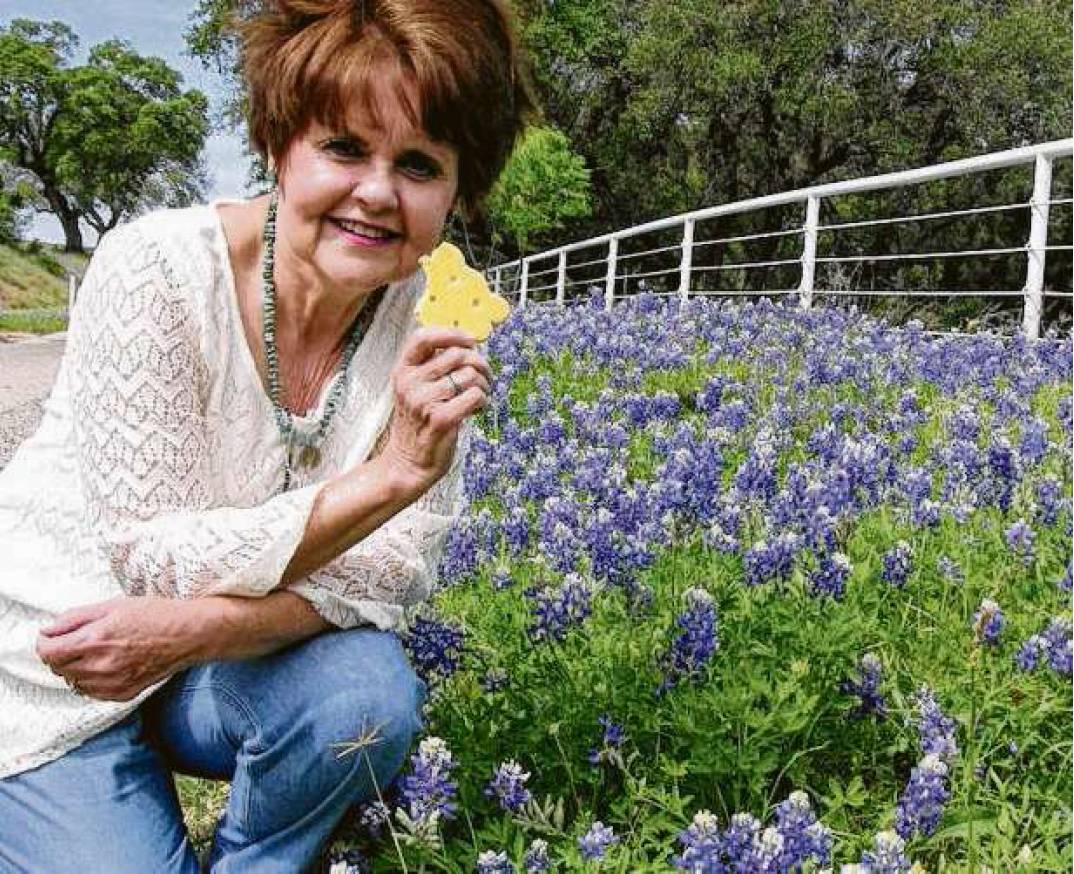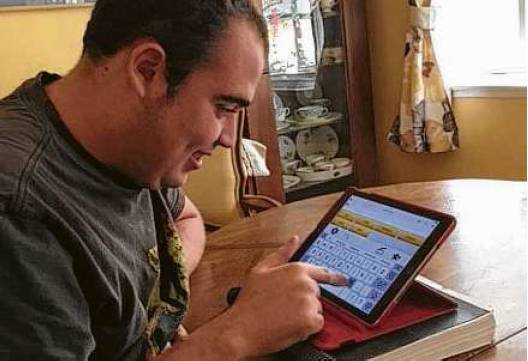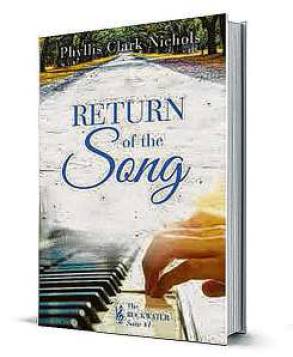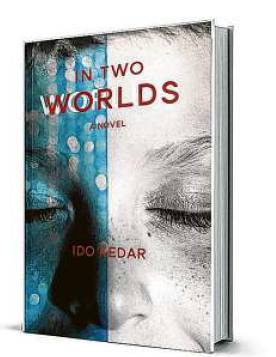NOVELS
Fiction gives voice to the voiceless
By Suzanne Garofalo STAFF WRITER
The ability to speak is a given for most, the need to be heard universal. We recognize it in our idioms — “the squeaky wheel gets the grease.” We elevate it in our poetry — why the caged bird sings.
But what do we miss when we ignore those who can’t speak? Society fills the silence with assumptions about such a person’s worth.
Fiction has always invited us to broaden our thinking via worlds different from our own. Two disparate novels with Texas ties, “In Two Worlds” and “Return of the Song,” feature characters with nonspeaking autism who remind us why we should listen with new ears.
“In Two Worlds”
Anthony, the young protagonist of “In Two Worlds,” spends his days trapped in a cage of sorts. He is intelligent but lacks the motor skills to speak orally or for sign language — “his tongue was cleaved and his hands bound.” For years, he lives without hope, until a therapist’s fringe methods give him a chance at a life of meaning.
He is not unlike the man from whose mind he sprang. Ido Kedar is thought to be the first novelist (though not the first writer) with nonspeaking autism. “Nonverbal” can be code for “low functioning,” so Kedar spent every day desperate to show parents, special-education teachers and speech therapists that he knew and was capable of much more than he could physically say.
“I tried to describe Anthony’s inner world as realistically as I could,” Kedar says via email, which, like his writing, he types slowly with one finger. “My visual sensory system is overly responsive, so I see patterns in movement and water, like he does. But I did not write an autobiography. Some of his challenges are things I do not share. I saw Anthony more as an autistic everyman. He represents many silent people.”
The therapist character is inspired by the real-life educator who worked with Kedar in the early aughts, Soma Mukhopadhyay of the HALO Center in Austin. HALO stands for Helping Autism through Learning and Outreach. She wants to dispel skeptics’ suggestion that Kedar’s cognitive language means he doesn’t have autism after all.
“The language area and speech-producing area of the brain are not the same,” Mukhopadhyay says. “We know more about the neuroscience now.”
Readers may be held up by some “inside baseball” autism lingo (references abound to a “stim,” or self-stimulatory behavior; Risperdal, an antipsychotic medication; and apraxia, a motor speech disorder). Yet Kedar injects humor into Anthony’s experiences, making him relatable, full of promise — and infinitely more human than many of the “experts” find him.
Early on, 7-year-old Anthony’s irritation at his younger brother builds along with his frustration over remedial topics such as basic emotions:
“Maybe he could get a flashcard with a picture of four-year-old Gary’s self-satisfied expression to add to the other facial expressions he was constantly drilled on, the ones showing stereotypically happy, sad, mad and surprised … ‘Touch irksome smugness.’ He was sure to recognize it.”
Kedar, who lives in a suburb of Los Angeles, wrote a memoir, “Ido in Autismland,” between ages 12 and 15 (his blog, idoinautismland.com, picks up where the book left off ). Though that work made an impact among families and professionals, “I realized the general public still knew very little about autism, and what they did know was often incorrect.”
A novel presented an opportunity.
“Fiction lets the readers experience autism for themselves. They go into Anthony’s head to swirl with his senses, hear his thoughts and face his outer challenges. Fiction let me create a true-to-life family and show how autism impacts them, for good and bad. It also gave me the chance to lay out current controversies through a variety of characters.”
“Return of the Song”
A piano teacher, still heartbroken over her fiance’s death six years ago, goes through the motions. Caroline has all but abandoned her ambitions in favor of a small, predictable life. Then a musical savant named Bella reawakens her purpose — without a word.
Savant syndrome is extraordinary, and extraordinarily rare. Many with autism exhibit mild savant tendencies. But the perhaps fewer than 100 true savants in today’s world live with a mental disability yet demonstrate almost superhuman skill from memory: rapid calculation, map-making, or artistic or musical ability.
Phyllis Clark Nichols, who lives near Boerne, gives the condition a sensitive, meaningful treatment in “Return of the Song,” the first in The Rockwater Suite romance trilogy. The author explores the idea that, as Bella’s grandmother puts it, “perhaps God couldn’t give her a gift so big and so rare without taking some things away.”
“What are we missing, that we can’t participate in their world?” Nichols asks of people with disabilities. “Bella is not just a musical prodigy. They’re not as fascinating to me. … What else is she capable of that we don’t know about?”
A classically trained musician who formerly worked with people with disabilities, Nichols wanted to portray Bella authentically. She sought an expert to review her manuscript. Dr. Darold Treffert, a psychiatrist specializing in autism spectrum disorder and savant syndrome, endorses “Return of the Song” in its introduction.
At first, Caroline sees the preteen, who doesn’t speak or make eye contact, play any piece perfectly after hearing it just once. Someone explains that the savant brain is like a tape recorder.
Later, music is more integral — a form of communication. With C.P.E. Bach’s “Solfeggietto in C Minor,” “her body rocked back and forth as if the movement was choreographed into her brain before she was born.”
Music bridges a divide, allowing Bella to connect with the world. And it rekindles a spark in Caroline, opening the door for a career and love.
“Do we cocoon ourselves away till a Bella bursts the bubble?” Nichols asks. “The music and color are gone out of life, but you have to realize other people can feel it. Stick close to them until it comes back.”
Indeed, stories can connect us when spoken words aren’t enough.
As Kedar puts it, “fiction takes the reader on a journey into Autismland and exposes the reader to a new world that I hope will prompt social change and greater understanding and tolerance of nonspeakers.” suzanne.garofalo@chron.com



